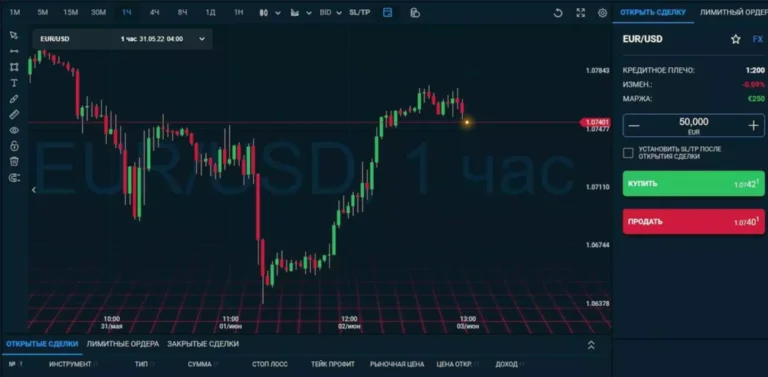Content
Finally, the SkillcastConnect community provides a unique opportunity to network with other compliance professionals in a vendor-free environment, priority access to our free online learning portal and other exclusive benefits. These red flag indicators focus on the behaviours from either the https://www.xcritical.com/ sender or recipient of illicit transactions. Money laundering behaviour that takes advantage of the anonymous nature of cryptocurrencies may show the following characteristics.
Future-Proof Your AML Career: AML Technology Job Requirements Revealed
In addition to blockchain analysis, financial investigations and traditional techniques can also be used to uncover money laundering schemes and identify the individuals responsible for these activities. By analyzing financial records, tracing transactions, and interviewing suspects, investigators can piece together the complex web of transactions that underlie money laundering schemes and bring the criminals to justice. These tools and techniques should be capable of analyzing complex blockchain data to identify suspicious transaction patterns, pinpoint potential illicit activities, and even predict future threats. They should also provide a means crypto exchange kyc requirements of linking blockchain transactions to real-world identities, a process often complicated by the pseudonymous nature of cryptocurrency transactions. The European Union’s Anti-Money Laundering Directives aim to prevent money laundering in the crypto industry by implementing strict KYC/AML requirements for crypto service providers.
Money laundering concentration at fiat off-ramps
- It has been argued that with the increasing crypto economy and the liquidity of cryptocurrency globally, cryptocurrency could potentially serve as another vehicle for money laundering activities.
- The Financial Action Task Force moved quickly to provide a global framework for all virtual asset service providers.
- Cracked is a well-known English-language hacking forum, with more than 3.5 million users and 22.6 million posts on hacking, cracking, leaks and related topics.
- These kiosks allow customers to insert banknotes, buy cryptocurrency and send it directly to a wallet without needing an exchange or even a bank account.
- It involves processing the criminally-derived funds in order to disguise their illicit origin.
- Finally, once its origins are obscured, the cryptocurrency can be reintroduced into the financial system.
Alden Pelker of the Criminal Division’s Computer Fintech Crime and Intellectual Property Section (CCIPS) and Assistant U.S. Attorney Christopher B. Brown for the District of Columbia are prosecuting the case. CCIPS Paralegal Specialist Divya Ramjee and Paralegal Specialist Angela De Falco for the District of Columbia provided valuable assistance. Information held on a blockchain is shared and continually reconciled by an entire network of computers. It can’t be chained because every computer on the network must continually accept every new addition of a block to the chain. You rely on Marketplace to break down the world’s events and tell you how it affects you in a fact-based, approachable way.

What is AML and KYC for Crypto?
Related to phishing, impersonation scams involve criminals posing as well-known individuals or organizations to deceive victims into sending funds or revealing sensitive information. In the cryptocurrency space, impersonation scams may involve criminals pretending to be representatives of exchanges, wallet providers or celebrities to trick users into sending cryptocurrencies to fraudulent addresses or divulging sensitive information. By doing so, they can help to prevent money laundering and other illicit activities, while also protecting their users from potential risks. For instance, CSAM vendors and ransomware operators show a high degree of concentration — just seven deposit addresses account for 51.0% of all value received from CSAM vendors by exchanges, while for ransomware, just nine addresses account for 50.3%.
FATF’s Recommendations for Virtual Assets Service Providers
When Binance, a crypto exchange, made KYC mandatory for all of its customers, it found that “most people — 96%, 97% of users — go through KYC” during onboarding. This minor reduction in registrations is a small price to pay for the ability to operate in hundreds of regulatory environments, serve millions of customers, and stop illicit activities of every type. When suspicious activity is observed, VASPs report this information to relevant regulators and agencies, which then use blockchain analysis tools like Chainalysis Reactor to investigate the flow of funds and link illicit activity to real-world identifiers. Despite the nature of cryptocurrencies being very different to traditional fiat currency, the strategies employed by fraudulent users to launder money often resembles traditional methods.

This is done by funneling the funds to legitimate channels so that the source of funds can plausibly be explained. In the example below, an actor sent illicit funds from a mixer through a series of peel chains to “peel off” small amounts of BTC (represented by the green nodes) that are then sent to an exchange. SIM swapping involves the hijacking of a victim’s phone number in order to fraudulently authenticate the movement of funds out of their account.
In 2022 a Florida man was sentenced to 18 months in prison for a 2018 SIM swap attack that allowed his co-conspirators to hijack the victim’s phone number and fraudulently transfer over USD 23 million in cryptocurrency away from his crypto wallet. The most damaging type of infrastructure attacks in 2022 were private key or seed phrase thefts, which allow an attacker to commandeer and drain a victim’s wallet. Private key or seed phrase compromises accounted for nearly USD 1.5 billion in stolen funds, or 85% of all infrastructure attacks, in 2022. Other types of infrastructure attacks, such as front-end compromises and DNS hijacking, accounted for about USD 250 million in stolen funds in 2022.
With low transaction costs, Bitcoin provides an affordable and efficient means of cross-border payments, reducing the reliance on costly intermediaries. A global regulatory framework will bring order to the markets, help instill consumer confidence, lay out the limits of what is permissible, and provide a safe space for useful innovation to continue. TRM Labs research has also found bridge-hopping to be a favored money laundering methodology used by CSAM actors. Parasite exchanges were also found to play an important role in the Russian darknet market ecosystem, resulting in significant exposure to Hydra - the world’s largest DNM until its sanctioning by OFAC in April 2022. Even controlling for sanctions exposure, TRM Labs research found parasite exchanges to carry 45 times more illicit exposure than compliant exchanges, as a percentage of their volume.
The 5th Anti-Money Laundering Directive (5MLD) marked a significant step in regulating the cryptocurrency sector within the European Union (EU). The EU adopted 5MLD in April 2018 to further strengthen the response against money laundering and terrorism financing and it was incorporated into legislation by member states as of January 2020. Additionally, cryptoassets have facilitated the creation of decentralised applications (DApps) in fields like healthcare, where patient data can be securely managed, and in the gaming industry, allowing for unique in-game assets and economies. Adrianne Appel explains the financial crime monitoring system issues that led to Metro Bank’s substantial fine from the UK Financial Conduct Authority. Code exploits target a project’s smart contract code and allow an attacker to remove funds from DeFi protocols without authorization. Code exploits are facilitated by coding mistakes and errors, such as unchecked external calls, access control issues, and logic bugs.
A 2019 study by researchers at the Chinese University of Hong Kong, Deakin University and the University of Technology Sydney found that cryptocurrency was being widely used by traders in China to circumvent capital controls. Fundraising campaigns for ISIS families held in internment camps in northeastern Syria has been a significant driver of cryptocurrency usage among ISIS and its supporters. TRM Labs identified dozens of fundraising campaigns that accepted cryptocurrency in 2022, raising between a few dollars to tens of thousands. This not only helps to maintain the integrity of the crypto ecosystem, but also builds trust with their users and the wider public, demonstrating that they are committed to operating in a transparent and ethical manner. North Korea-affiliated hackers have been among those to utilize bridges for money laundering the most, and we can see an example of this activity on the Reactor graph below.
Unlike traditional fiat currencies, cryptocurrencies are not controlled by any central authority, allowing transactions to take place outside the purview of government or financial institution oversight. To lower bitcoin cryptocurrency money laundering risk, many criminals turn to decentralized peer-to-peer networks which are frequently international. Here, they can often use unsuspecting third parties to send funds on their way to the next destination. Online cryptocurrency trading markets (exchanges) have varying levels of compliance with regulations regarding financial transactions. Criminals use crypto money laundering to hide the illicit origin of funds, using a variety of methods. The most simplified form of bitcoin money laundering leans hard on the fact that transactions made in cryptocurrencies are pseudonymous.
This innovation is particularly prevalent with privacy coins like Monero, which offer a higher level of anonymous blockchain transactions by concealing details about user addresses from third parties. Here we discuss cryptoasset compliance, blockchain analysis, financial crime, sanctions regulation, and how Elliptic supports our crypto business and financial services customers with solutions. Moreover, by adopting new KYC measures, cryptocurrency businesses can build trust with users and regulators without sacrificing their bottom line.

Monitoring transactions is an essential component in identifying transactions that are potentially suspicious. Therefore, regulated businesses need to screen their customers transactions at an ongoing level. Without official regulation, cryptocurrency can lends itself to be a platform that attracts criminal trading. It can be used as a vehicle to convert funds gained illicitly into cryptocurrency, and eventually to clean money.
Banks, brokers, and dealers now follow a complex regulatory framework of conducting due diligence on customers and tracking and reporting suspicious transactions. A written AML compliance policy must be implemented and approved in writing by a member of senior management and overseen by an AML compliance officer. For the first time, financial institutions were required to report cash deposits of more than $10,000, collect identifiable information of financial account owners, and maintain records of transactions.
These pool cryptocurrencies from multiple sources and carry out thousands of random transactions via wallets and fake exchanges. Eventually, the crypto is returned to the original owner in random increments at randomly determined times, making it extremely difficult to establish its origin. As prepaid gift cards can be purchased using cryptocurrency, they can also be abused by criminals to cash out illicit funds. After buying gift cards from an online service with proceeds from crime, an illicit actor can then use the cards to acquire a wide range of consumer goods from mainstream e-commerce platforms and physical stores.
